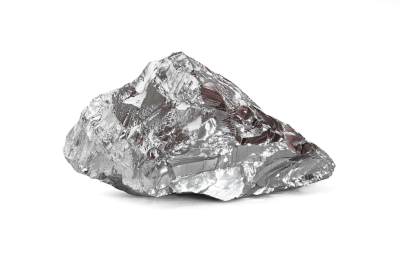What Is Nickel?

Nickel is a metallic element with the element symbol (Ni) and an atomic weight of 58.71.
It is a silvery-white metal with a specific gravity of 8.9 (20°C), a melting point of 1,453°C, a boiling point of 2,730°C, and a coefficient of linear expansion of 13.3 x 10-6/°C. It has good corrosion resistance, excellent ductility, and is easily processed. It has good corrosion resistance, excellent ductility, and is easy to process.
Uses of Nickel
Products containing nickel are all around us. For example, it is used for cookware, medical equipment, cell phones, buildings, and generators.
One of the most important of these is the rechargeable battery used in electronics, emergency power supplies, and electric vehicles. One such battery is the nickel-metal hydride battery. Nickel is used in the positive electrode of these nickel-metal hydride batteries.
Nickel-based cathode active materials are also used in lithium-ion batteries as well as nickel-metal hydride batteries. Although not all cathode active materials used in lithium-ion batteries contain nickel, lithium-ion batteries using nickel-based cathode active materials are the mainstream raw material because it is easy to increase energy density and output.
Characteristics of Nickel
Nickel is particularly resistant to corrosion in freshwater, seawater, and alkaline solutions. While some people have the image that “metals rust easily when immersed in seawater,” nickel can be safely used in seawater because of its strong corrosion resistance.
Nickel is also resistant to corrosion and oxidation. A metal that is strong but weak against corrosion will have durability problems, but the use of nickel can solve these problems. Another feature of nickel is that it can be alloyed with other metals to create a variety of materials.
Since nickel can be alloyed easily, it is crossed with all kinds of metals to create new alloys. It can be processed at relatively low cost, making it an excellent, cost-effective material. Nickel has a melting point of 1,453°C and a very high thermal tolerance. By taking advantage of this property when alloying, heat-resistant alloys can be created.
One of the best-known nickel alloys is nichrome. As the name suggests, this alloy is primarily composed of nickel and chromium, and is used as a heat-generating element due to its high electrical resistance.
Other Information on Nickel
1. Nickel Alloys
Alloys containing nickel typically offer improved corrosion resistance, durability, and strength against temperature changes compared to the original metal-only material, and have a wide range of special magneto-electrical properties. Stainless steel is an alloy of iron, nickel, and chromium and contains approximately 8-12% nickel.
Nickel-based alloys have an even higher nickel content. Nickel alloys are also used to make coins.
2. Compounds Containing Nickel
In addition to forming alloys with other metals, nickel is also industrially produced in inorganic compounds such as nickel oxides and salts with acid components such as sulfuric acid and hydrochloric acid.
Nickel oxide (II)
Chemical formula: NiO, dark yellowish green to gray powder. Insoluble in water, soluble in hydrochloric acid.
Applications: raw material for electronic components, battery electrode materials, catalysts, ceramic products, etc.
Nickel Sulfate
Chemical formula:NiSO4, green crystal or powder. Easily soluble in water, insoluble in ethanol.
Applications: Nickel plating, Nickel catalyst, black coloring agent for zinc and brass, pigment for ceramics, active material raw material for lithium-ion batteries.
Nickel Chloride
Chemical formula: NiCl2, green columnar crystals, monoclinic crystals, deliquescent. Easily soluble in water and alcohol.
Applications: Electroplating, reagent
Nickel Carbonate
Chemical formula: NiCO3, light green crystal or powder. Insoluble in water, soluble in acid.
Uses: catalyst, pigment for ceramics, raw material for Nickel salt, electroplating.
Nickel Nitrate
Chemical formula: Ni(NO3)2, green monoclinic crystals, deliquescent. Soluble in ethanol and ammonia water.
Applications: Raw material for catalysts, metal surface treatment agent, plating material, batteries.